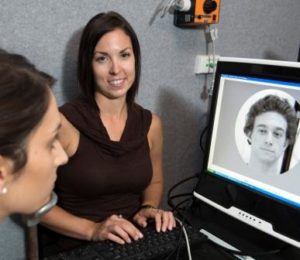 Without even realising it, most of us pay more attention to the people, images and objects on the left side of space.
Without even realising it, most of us pay more attention to the people, images and objects on the left side of space.
“The right and left sides of the brain control movements on the opposite side of the body but the right hemisphere also controls attention, therefore we tend to focus our visual attention to the left,” explains Dr Nicole Thomas (pictured), a postdoctoral research fellow at Flinders University.
“If a person is looking at a landscape portrait they’d look more towards the left side,” she said.
“Or in advertising, for example, people are more likely to purchase a product that has been lit from the left side than the exact same product that’s lit from the right.”
Since starting at the Flinders University’s Brain and Cognition Laboratory in 2011, Dr Thomas has dedicated most of her research to understanding the fundamental science behind how brain function influences peoples’ perceptions and behaviours.
Using various eye movement studies to indicate where attention is being directed, Dr Thomas is currently investigating “up-down differences” in visual attention – that is how people direct their attention toward things in their upper or lower space.
“From an evolutionary perspective, there’s a theory that things located in the lower space are more relevant to us because they’re closer, whereas things in the upper space are more likely to be further away so we tend to allocate attention to things in our lower visual field.
“And when there is a distraction in the upper visual field our attention is biased towards the left.
“This is quite important because if you think of an everyday task like driving, where we pay a lot of attention to the upper visual field, distractions that might occur could pull our attention to the left side.”
Dr Thomas – who has received one of Flinders 2012 Early Career Researcher Awards for her work in the field – said research into attentional biases could be used in everything from marketing to safer driving campaigns.
“Most of us aren’t aware of all these biases but they do have a significant influence on our behaviours and everyday lives – we just don’t know it.”


…am wondering if the bias is the same in cultures that read from right to left and in illiterate research participants- are we trained to direct our attention towards the left?